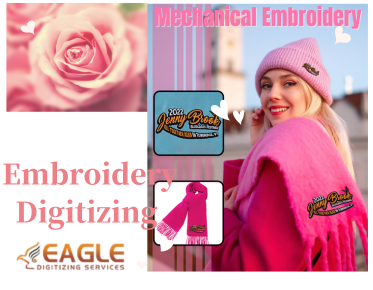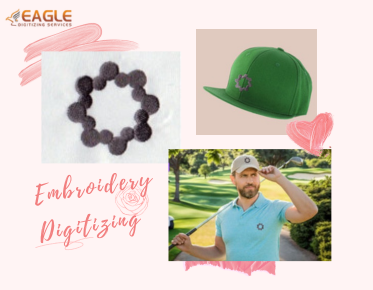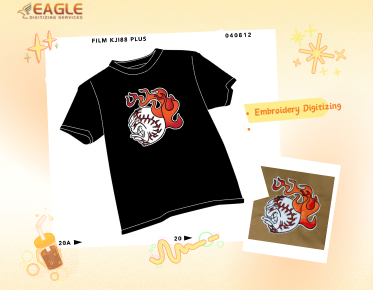Mixed-Media Techniques Combining Embroidery with Beads, Metallic Foils, or Paint
In the world of textile art, mixed-media techniques have become increasingly popular for their ability to create rich, tactile designs that captivate the senses. By combining traditional embroidery with elements such as beads, metallic foils, and paint, artists and designers can produce pieces that are not only visually stunning but also texturally engaging. This fusion of materials and techniques allows for a greater expression of creativity and innovation in the field of embroidery.
Embroidery and Beads: A Classic Combination
Beads have long been used in conjunction with embroidery to add dimension and sparkle to fabric designs. This technique involves stitching beads onto the fabric alongside or over the embroidered threads, creating a layered effect that catches the light and adds a new level of intricacy to the piece. Beads can be used to highlight specific areas of a design, such as the center of a flower or the eyes of a figure, or they can be scattered throughout to create a shimmering background.
The choice of beads can significantly impact the final look of the embroidery. Glass beads, for example, offer a high shine and come in a variety of colors and finishes, while wooden or ceramic beads provide a more rustic, earthy feel. The combination of these materials with embroidery allows for endless possibilities in design and texture.
Incorporating Metallic Foils for a Modern Touch
Metallic foils are another exciting addition to embroidery, offering a modern twist to traditional techniques. These foils can be applied to fabric using heat and pressure, creating a reflective surface that contrasts beautifully with the matte finish of embroidery threads. This technique is particularly effective for creating bold, graphic designs or for adding a touch of luxury to a piece.
When using metallic foils, it's important to consider the overall design and how the foil will interact with the embroidered elements. Foils can be used to create outlines, fill large areas, or highlight specific details within the embroidery. The combination of metallic foils and embroidery can result in a striking visual effect that is both contemporary and timeless.
Adding Paint for Depth and Color
Paint is another medium that can be effectively combined with embroidery to enhance the depth and color of a design. By applying paint to the fabric before or after embroidering, artists can create backgrounds, add shading, or introduce new colors that complement the threads. This technique allows for a greater range of expression and can be used to create both subtle and dramatic effects.
Watercolor paints, for example, can be used to create soft, blended backgrounds that provide a gentle contrast to the sharp lines of embroidery. Acrylic paints, on the other hand, offer bold, opaque colors that can be used to create striking patterns and designs. The use of paint in embroidery opens up new possibilities for creativity and allows artists to push the boundaries of traditional textile art.
Exploring the Benefits of Mixed-Media Embroidery
The combination of embroidery with beads, metallic foils, and paint offers numerous benefits for artists and designers. These techniques allow for greater flexibility in design, enabling the creation of pieces that are both visually and texturally rich. Additionally, the use of mixed-media techniques can help to elevate embroidery from a craft to a form of fine art, attracting a wider audience and opening up new opportunities for artists.
For those looking to explore these techniques further, embroidery digitizing services can be an invaluable resource. Companies like Eagle Digitizing offer professional services that can help artists translate their designs into digital formats, making it easier to experiment with different materials and techniques.
Practical Applications and Future Trends
Mixed-media embroidery is not only a popular choice for artists but also for fashion designers and interior decorators. The unique textures and visual appeal of these techniques make them ideal for creating statement pieces in clothing, accessories, and home decor. As the demand for personalized and unique items continues to grow, the use of mixed-media techniques in embroidery is likely to become even more prevalent.
Looking to the future, we can expect to see even more innovation in the field of mixed-media embroidery. Advances in technology, such as embroidery digitization, will continue to expand the possibilities for artists and designers, allowing them to push the boundaries of what is possible with fabric and thread. As these techniques become more accessible, we can look forward to a new era of creativity and expression in the world of textile art.
Whether you are an artist, designer, or simply someone who appreciates the beauty of textile art, the world of mixed-media embroidery offers endless possibilities for exploration and creativity. By combining traditional techniques with modern materials, you can create pieces that are truly unique and reflective of your personal style.
For those interested in exploring these techniques further, digitizing embroidery services can provide the tools and expertise needed to bring your creative visions to life. With the right resources and a willingness to experiment, the possibilities are truly endless.



